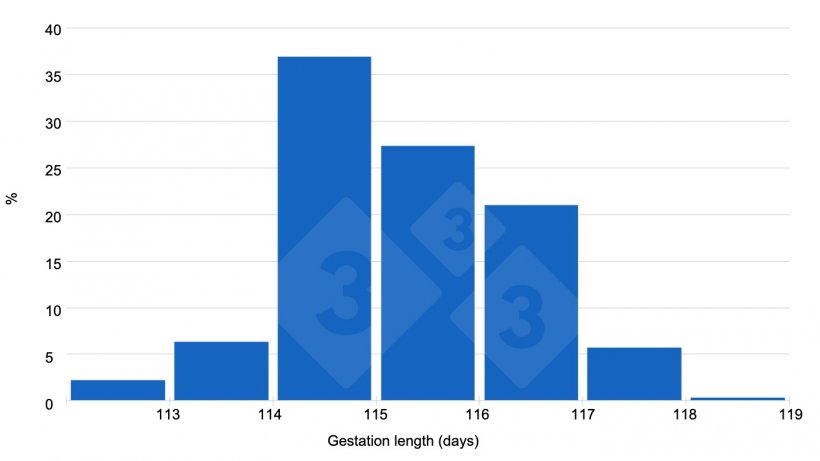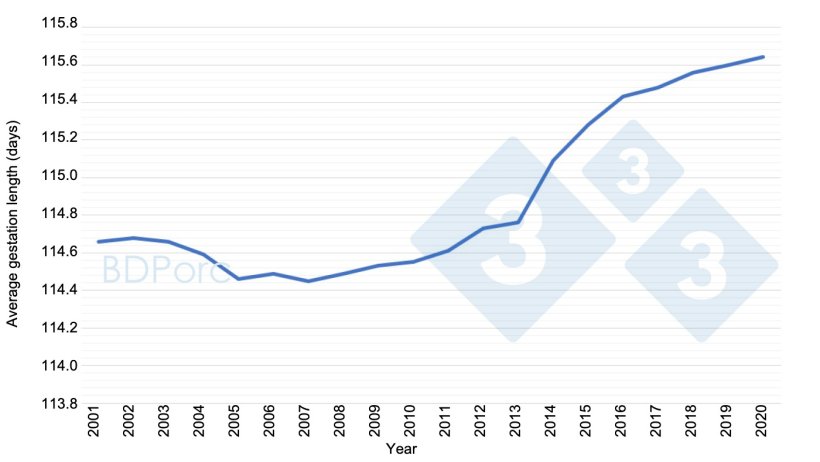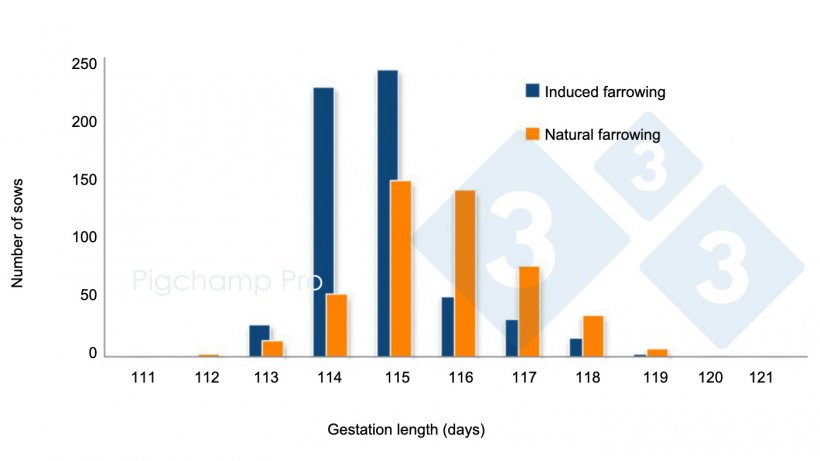As you may already know, the name of this website, Pig333, comes from the "3 months, 3 weeks, and 3 days" of the sow's gestation period. Is this still the gestation length today or will we have to change our name?
To find out the current gestation length of sows, between March 26 and April 16, we asked 333 users how many days gestation lasts on farms that do not induce farrowing. In total, 314 users from 55 countries responded.

Responses reveal a trend toward longer gestations
333 users' responses indicate a trend towards gestations longer than 115 days, as reflected in Graph 1. Although we cannot verify the accuracy of the data, we can see that the graph is clearly skewed to the right, indicating that the gestation length exceeds 115 days. The mean and median are 115.5 and 115.6 days, respectively.

Graph 1. Responses from 333 users indicate a trend toward gestations greater than 115 days.
We wanted to compare these responses with the information collected over the last twenty years by the BDporc database and saw that the average gestation length observed in sows is increasing in Spain, from 114.6 in 2001 to 115.6 in 2020 (Graph 2).

Graph 2. Average sow gestation length in Spain from 2001 to 2020. Source: BDPorc.
A closer look at this graph reveals an increase of 1 day in the gestation length over a short period of time. What could be the causes for this increase? We do not have precise data but we can consider a probable reduction in the number of farms that synchronize farrowing, which would bring us closer to the true gestation length.
An example of the importance that inducing farrowing has on the gestation length can be seen in the article, Are sows asking for the Pig334? (Part 1) and (Part 2) from Pigchamp Pro Europa (Graph 3), where we see how the gestation length gets longer when farrowing is no longer induced.

Graph 3. Comparison of gestation length between induced farrowing at 114 days and natural farrowing on a specific farm (Are sows asking for the Pig334? 2/2).
Why has there been a decrease in the number of farms inducing farrowing?
Piglet birth weight has a significant relevance, especially on farms with hyperprolific lines, as it is closely related to their survival and subsequent performance.
We can only speculate because we do not have data, but in the article Are sows asking for the Pig334? (1/2) (Figure 4) we see how birth weight is reduced in piglets from induced farrowings compared to those born by natural farrowing, which is not surprising if we consider that much of the fetal growth occurs in the last weeks.

Figure 4: Birthweight differences between piglets from induced (day 114) versus natural (day 116) farrowings in hyperprolific sows. (Are sows asking for the Pig334? 1/2).
Conclusions

The days of 333 are behind us. The actual gestation length of sows has increased and is variable depending on a variety of factors. Farms must know the actual gestation length for their particular circumstances to properly manage flows and plan movements. If the farm is farrowing, it should routinely review actual gestation length to avoid premature farrowing, which would result in piglets being born small and weak.
333 Staff.



